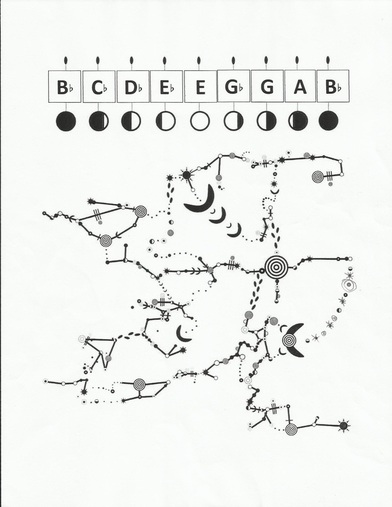|
Next Friday, May 10, I will be playing DMA recital #3! Come check out some great saxophone music including Jennifer Higdon's Sonata, Carlos Gonzalo Guzman-Munoz's Monologo en Tiempo de Joropo, Mark Oliveiro's Baayami: From the Sky, and David Biedenbender's Images. I will be assisted by the talented Jieun Kim on piano!
0 Comments
With a little less than a month to go until the World Saxophone Congress in Scotland, I thought I would take some time to write about Mark Oliveiro's new composition Baayami: From the Sky which I will be premiering on July 12. It has been a terrific experience workshopping this piece with Mark over the past week and putting all of the pieces together in this intense and extremely intricate piece. I first heard Mark's music at the 2010 NASA Biennial Conference in Georgia when Zach Shemon premiered TANOX for alto saxophone, harp, and fixed media. Later that year, as Mark started at the University of North Texas, we had the opportunity to work together and collaborate on some of his music, including TANOX and a new composition for saxophone quartet and fixed media called Re(ed)Mix - 2.0, which is dedicated to the Zzyzx Saxophone Quartet. After a great experience working on these pieces, I knew that I would like to commission Mark to write a new solo composition for me to premier at the Congress. Thus, Baayami is born. The image above is the finished score of Baayami: From the Sky. This is what Mark writes about the piece... "The ancients of prehistoric Australia were a mystic people, a nomadic culture rich in animistic reverence. In order to trace the footsteps of their forbears, the original inhabitants of Sydney, Australia, walked the lines of stars and song as a homage to the elders with the promise of survival. Engravings of astrological maps, shamanistic symbology and petroglyphic markings are the final remnants of this aged guild of celestial worship. Baayami is a contemporary adaptation of a musical reading of the Sydney Rock Engravings, with respect to the real and the imaginary, this is a work of fictional historical recreation." The score is a representation of the night sky as seen from Australia. Each star is represented by a different symbol and the constellations are connected by dark lines, which also may or may not contain various symbols. Each symbol has a different meaning and musical gesture based on some aspect or component of Aboriginal music. The piece is broken into nine equal sections, represented by the lunar phases at the top of the score, each containing a different fundamental tone. For each lunar phase, only one constellation will be played. After that phase is over, the performer would then move onto an adjacent constellation. There are about twenty different constellations represented above, but only nine will be played in any given performance which gives this piece a very unique aspect in that it could be performed very differently every time. Another interesting aspect of this piece is that the size and location of each symbol on the map above correlates to different dynamics and pitch material, which is then further influenced by relationship of the star (symbol) to the lunar cycle (fundamental tone). As you can see, each symbol has its own page of instructions on how to create sound from the star map. The process of learning this piece has been way more complicated than traditional notated music, as I must first look at the symbol on the star map, figure out what musical gesture should be played and in what manner, determine the pitch material based on the location and dynamics based on the size, and then put it all together as musically as possible. That being said, I love this concept for this piece because I must essentially walk through the star map one star and constellation at a time. A very (musically) literal way of retracing the ancient Australians footsteps as they would have guided their way through the stars. I will not go into detail on the specifics of each symbol, but I will say that you could expect to hear various notated gestures, loud vocalizations and extended techniques such as multiphonics, singing and playing, etc. Some of these may or may not contain minimal body movement. In addition, there will be two percussion instruments that I will play with my feet as this is happening! :-) I look forward to premiering this piece at the World Saxophone Congress, and hope that if you are in Scotland that you will attend my recital on July 12 at 12PM in St. Leonard's Chapel!!!
You can view the recital program page for the event here. Visit Mark Oliveiro's website here. Check out this video of Aboriginal music here. Listen to me perform Mark's piece TANOX here. |
JKHSaxophonist, Artist, Listener, Thinker, Teacher, Performer, Curator, Veggie, Reader, Lover of Contemporary Music Archives
June 2017
Categories
All
|
Support Local Music!








 RSS Feed
RSS Feed